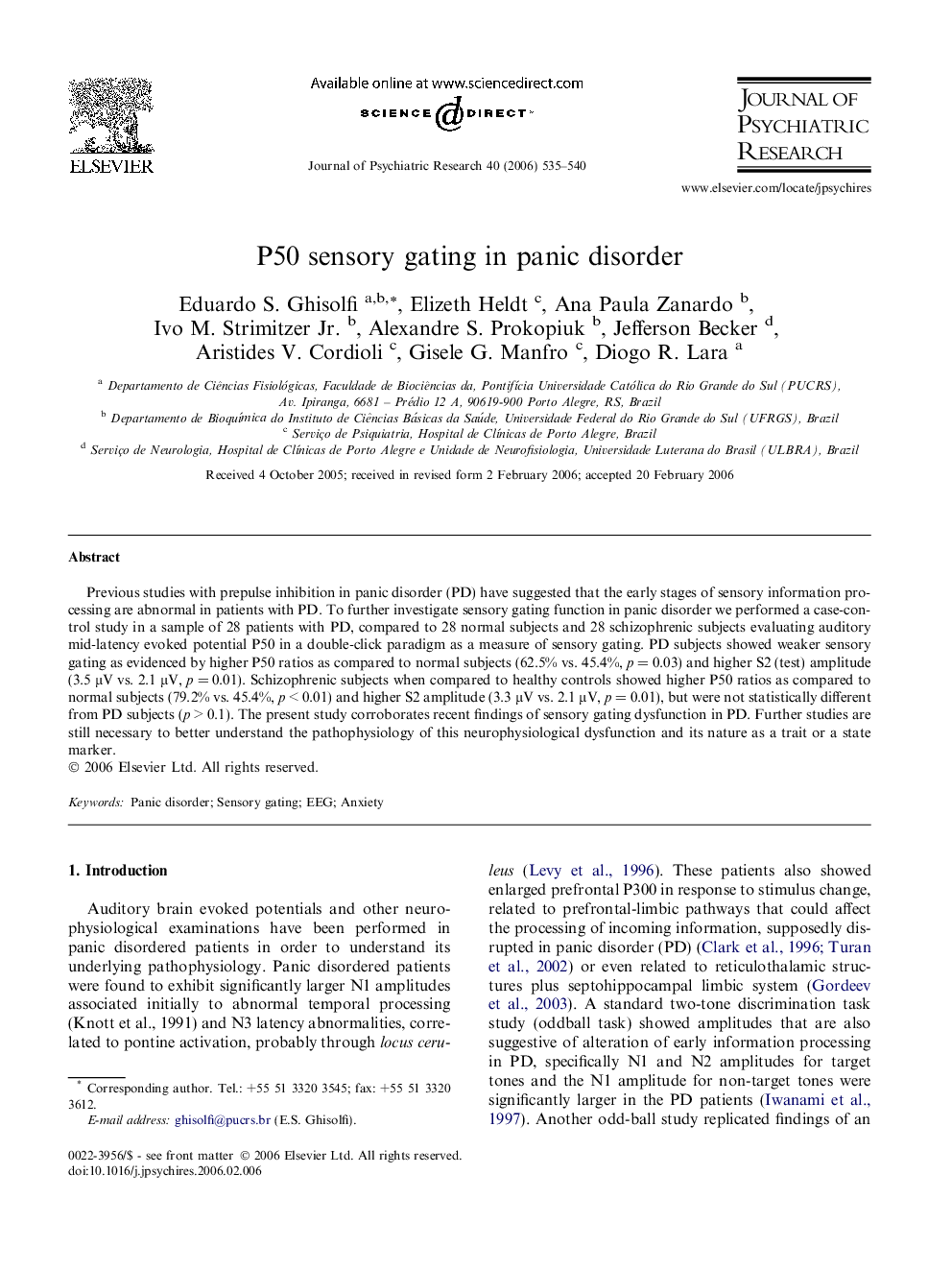| Article ID | Journal | Published Year | Pages | File Type |
|---|---|---|---|---|
| 327949 | Journal of Psychiatric Research | 2006 | 6 Pages |
Previous studies with prepulse inhibition in panic disorder (PD) have suggested that the early stages of sensory information processing are abnormal in patients with PD. To further investigate sensory gating function in panic disorder we performed a case-control study in a sample of 28 patients with PD, compared to 28 normal subjects and 28 schizophrenic subjects evaluating auditory mid-latency evoked potential P50 in a double-click paradigm as a measure of sensory gating. PD subjects showed weaker sensory gating as evidenced by higher P50 ratios as compared to normal subjects (62.5% vs. 45.4%, p = 0.03) and higher S2 (test) amplitude (3.5 μV vs. 2.1 μV, p = 0.01). Schizophrenic subjects when compared to healthy controls showed higher P50 ratios as compared to normal subjects (79.2% vs. 45.4%, p < 0.01) and higher S2 amplitude (3.3 μV vs. 2.1 μV, p = 0.01), but were not statistically different from PD subjects (p > 0.1). The present study corroborates recent findings of sensory gating dysfunction in PD. Further studies are still necessary to better understand the pathophysiology of this neurophysiological dysfunction and its nature as a trait or a state marker.
